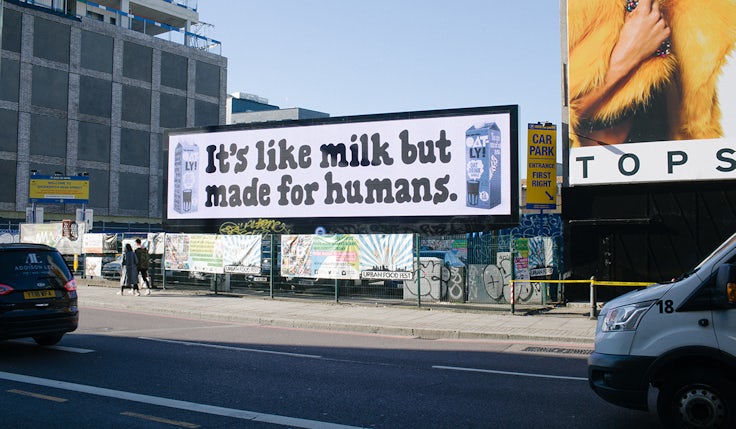EasyJet’s new CMO on using data to ‘supercharge creative judgement’
EasyJet’s Lis Blair is on a journey to move the brand beyond price with a new campaign just six months into the job and a long-term plan to balance creativity with greater use of data.

It might take a Tube, a train and a bus to reach easyJet’s headquarters from central London but once you arrive the bright orange hangar is impossible to miss.
The tangerine block sticks out amid the grey of Luton Airport and once inside the décor is just as distinctive. Designed to look like the inside of one of its planes, reception staff are dressed like cabin crew while the seats look very similar to those found on an airplane (minus the seatbelt).
Lis Blair, the brand’s new CMO, has been in the role for just under six months and has just launched the company’s new TV campaign – a whimsical dream-like sequence designed to build an emotional connection with consumers.
It’s easyJet’s first campaign since Johan Lundgren took over as CEO last year and aims to boost loyalty and move the company’s image away from just price. While the airline ranks number one among airlines for value for money on YouGov BrandIndex, with a score of +39, it performs less well on other metrics, failing to appear in the top five for impression or recommendation.
Blair explains: “We’re known for delivering value for money for our customers, and our great staff, but now is the time to deliver a big dollop of emotion.”
The campaign is just one aspect of a rethink of marketing at easyJet to focus more on building loyalty and making use of data. Blair’s appointment in that regard makes sense. She started at easyJet in 2012 as CRM and insight director, charged with establishing a single customer view. And she will be bringing that experience to bear in the CMO role.
“We’ve been working tirelessly on how to use data and insight to deliver targeted communications directly to customers and it is a cause dear to my heart,” she explains.
“I can take what I know and bring it across all our customer touchpoints to create that seamless user experience and a much more personalised journey.”
The role of data
Part of her role will involve working closely with easyJet’s new chief data officer (CDO), Luca Zuccoli. Lundgren’s creation of the data role was one of his first management changes as CEO and led to the departure of chief commercial officer (and top marketer) Peter Duffy. The new CMO role sees easyJet separate out marketing and sales once again.
READ MORE: Just Eat brings in former EasyJet marketer Peter Duffy in new chief customer role
Blair explains: “Johan wanted a board-level marketing position from the outset but took a little time to determine the best structure and the best approach and [how to split] the responsibilities between CDO and CMO.
“It was about aligning responsibilities where he best saw fit. The creation of the chief data officer role was about strengthening our capabilities there and recognising the opportunities within data, not just across commercial but also in engineering and crewing – all of the things that are fundamental to what we do.”
Blair has restructured the marketing department to align with this focus on data and recruited a digital director and head of loyalty. She says: “I spent a bit of time in the run-up to being offered the job thinking about what I would do and then, once I was offered the role, talking with the team working out where our opportunities are and where we can be better together.”
The drive for insight alongside creativity can be a difficult balancing act in marketing but Blair says the key is to see the two disciplines as complementary rather than competing.
She says: “If you look 15 or 20 years ago, marketing was much more about the creative side of things but now, with data and insight and analytics, we have the opportunity to supercharge creative judgement. Creativity is absolutely fundamental and something that we work really closely with our agency on, but the future of marketing is being able to balance creativity and data.”
This approach is something Blair has picked up from her varied marketing career, which has seen her work across a number of different sectors, from financial services to automotive and now travel.
She explains: “I started out at Barclays and financial services has an absolute wealth of data – more data than you can even dream. It was fantastic because I learned how to be focused but clever with what data you’ve got, and how you use that to drive loyalty and repeat purchase.”
From there, she moved onto Audi, where she says the job was more about building an “emotional connection because with cars it’s not just about the rational sale”.
She adds: “Arguably finance is about pushing whereas with cars it is much more of a pull approach. At easyJet it’s a mix of both. It’s asking how do we operate in a much smarter way with a lot less data than financial services.
“But it’s also about the emotional connection. There isn’t an ongoing relationship that you have with our brand. Compared to, say, a car or finance, once you’ve been on your trip you don’t necessarily have a day-to-day connection. So how do we keep that connection in a clever way?”
Driving customer experience
As a result of trying to balance creativity and insight, easyJet has hit on new services that it believes can add to the customer experience. One of those is an addition to the easyJet app – Look and Book – that uses image recognition technology to match a customer’s screengrab of a location to an easyJet destination.
“We are very excited about this industry-first which will use the power of the photo from another app to flip straight to booking,” Blair says. It is intended as a way of tapping into the Instagram generation of customers.
Despite having worked at easyJet for six years and built up a wealth of knowledge about the company, Blair says that the past five months as CMO “have felt like five minutes”, in part because “no two days are ever the same”.
She explains: “Whether it is understanding the complexities of the operation or the industry or the marketing, or looking at digital challenges or insight, there is always something to do and do better. That could be working on our website, through to what the next best opportunity is in customer insight, or improving the CRM programme. There’s always stuff to learn and do and put into action.”







